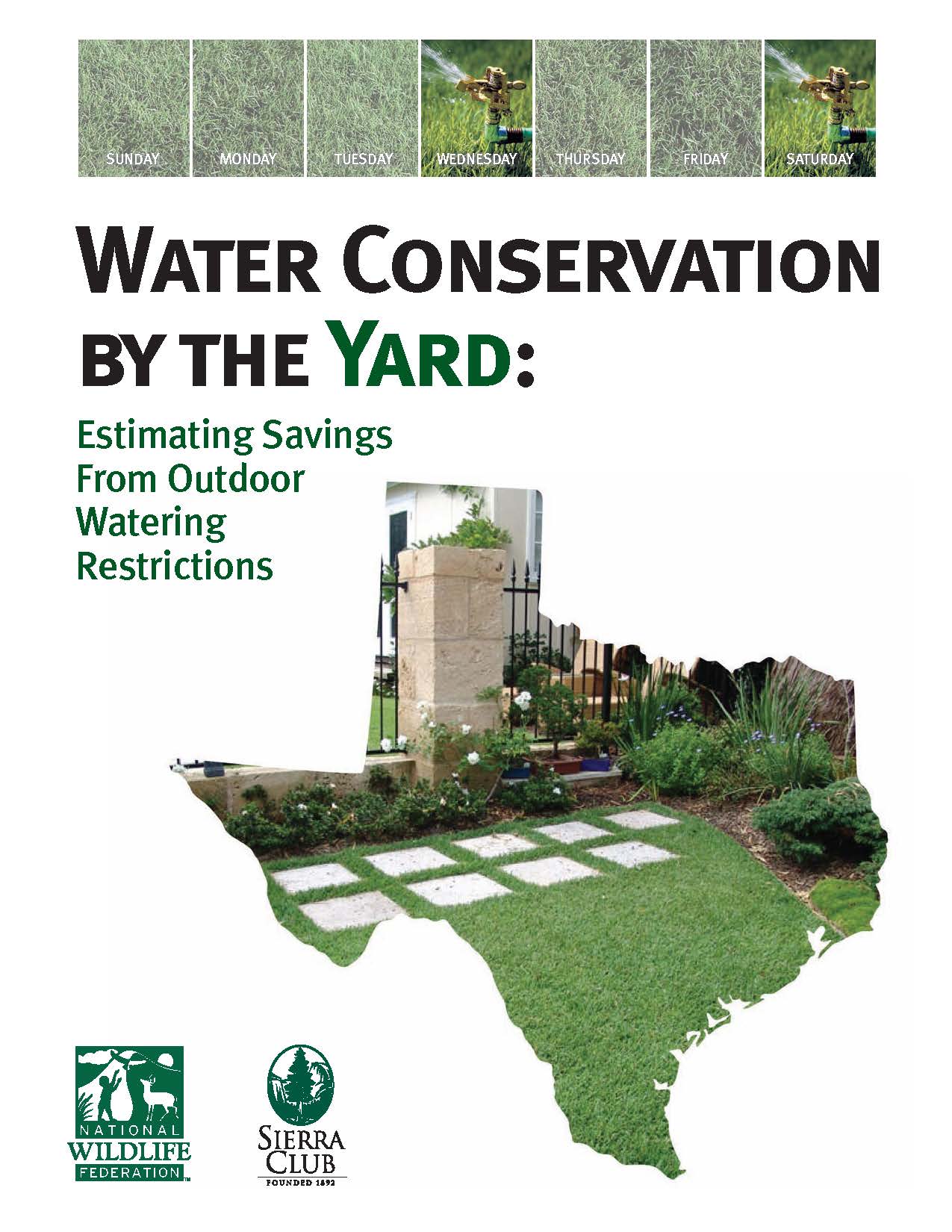
By Jennifer Walker
The Sierra Club and National Wildlife Federation released a report estimating that reasonable restrictions on lawn watering could save Texas billions of gallons of water every year. As shown in Water Conservation by the Yard: Estimating Savings from Outdoor Watering Restrictions, 52 billion gallons (about 158,000 acre-feet) of water savings per year could be achieved in the North Central Texas and Houston-Galveston regions alone if even minimal outdoor watering restrictions are adopted more widely.
Outdoor water use, which is primarily lawn watering, accounts for nearly one third of the water used by single-family homes in Texas. During hot and dry summers, the percentage often is even higher. Unknowingly, many homeowners put two to three times more water on their outdoor landscapes than is needed, which undermines efforts to provide water to meet the essential needs of all Texans.
There are some very simple measures to reduce outdoor water use in Texas that are both cost-effective and convenient. One of these measures is restricting the days people can water their lawns to no more than twice per week. Doing so would save homeowners money and maintain their lawns while also preserving our state’s precious water resources.
Many cities in Texas and elsewhere have implemented watering restrictions to cope with prolonged periods of drought and achieved significant water savings through those actions. Some cities, such as Dallas and Fort Worth in North Central Texas, seeing the savings and ability to maintain lawns with less frequent watering, have adopted the “no-more-than-twice-a-week” watering limits as an ongoing water conservation measure. As a result, officials in those two cities estimate that this one measure will allow them to stretch their existing water supplies for many more years, even as population growth continues.
In the absence of strong water conservation measures, the amount of water wasted will increase with our population. This could dry up lakes, rivers, and aquifers. Over-watering lawns is bad for Texas and for Texans. By simply limiting lawn watering frequency as recommended in the report and eliminating watering during the heat of the day, by 2060, water suppliers in North Central Texas could save 230,500 acre-feet per year (about 75 billion gallons), potentially avoiding about $1 billion dollars in infrastructure costs for new supplies. Similarly, in the Houston-Galveston area, savings by 2060 could total over 62,000 acre-feet (about 20 billion gallons) per year, potentially avoiding more than $200 million in infrastructure costs.
North Central Texas and Houston-Galveston area together represent almost half of the state’s population. Water Conservation by the Yard shows that if more cities in those regions adopt basic measures to reduce outdoor water use, significant water savings may be achieved. These steps alone will not address all of our water challenges, but they will help us reduce our water demands and give us more flexibility in how we meet our water needs.
Water Conservation by the Yard may be downloaded free at: bit.ly/WCBTR